Nature’s favorite color is a washed out magenta. It’s the original shade of many plants and the one hybrids will revert to if they go to seed. Petunias, garden phlox, sweet peas, nicotiana and foxgloves, for example, will all revert to this shade. The favorite color of many gardeners is firehouse red, the winner among tulips, zinnias, dahlias, salvia, impatiens and begonias by a wide margin. Orange and yellow come next, then pink, with blue and white, both comparatively rare in nature, last on the list.
So naturally, come of us gardeners want the elusive blue flower in our garden. Call us garden snobs. Or maybe we know that cool colors recede. When placed around the edges or at the back of a garden they make the space appear wider or deeper.
True blue flowers are rare. We use w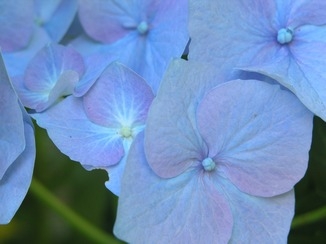
Rose hybridizers striving for true blue have come close by crossbreeding lavender hybrid teas in order to produce offspring having optimum amount of cyanidin, . The results have been more of a silvery lilac or mauve. A blue rose is still in the future although labs in Australia and Japan are genetically modifying the pigments from petunias to produce a blue rose. Their results are not yet perfected and these roses are more of a lilac in color and can not survive conditions outside the lab. It is apparently very difficult to isolate the pigment cyanadin. Delphiniums have a monopoly on it and so far aren’t giving up any of their secrets.
The color blue is calming and tranquil. It is the color of serenity and peace and is said to slow down the metabolism and reduce the appetite. When brightened with white or combined with yellow or orange in a complementary color scheme the results of blue in the garden are breathtaking. The great English gardener Gertrude Jekyll liked to use plants with golden leaves or clear yellow flowers to spice up blue gardens. Just remember that blues and purples are the first flowers to fade as darkness falls so be sure to have those whites and yellows to carry your garden into evening.
There are many blue perennials as handsome as they are durable that we can enjoy in our gardens today.
Some of my favorites are old fashioned hydrangeas and campanulas. Both are valuable in the shade garden along with omphaloides and brunnera. The blue spikes of a long blooming peach-leaf campanula just go together with the white and green variegated foliage of Jack Frost Siberian bugloss ( where do they come up with these names )?
In early spring we are dazzled by our native ceanothus which bloom with deep blue, sky blue or electric blue flowers. Emerald Blue phlox subulata carpets the ground in spring with deep blue flowers that top creeping stems. Penstemon Blue Springs, a California native hybrid, carries dense spikes of bright blue, bell-shaped blossoms.

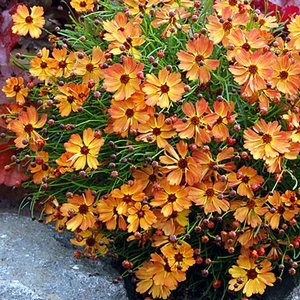
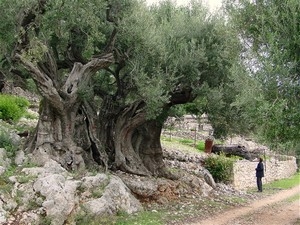 ns. The extra rainfall has allowed many trees, shrubs and perennials to grow lush and full like never before. As summer heats up think about adding drought tolerant plants especially in areas that are hard to water.
ns. The extra rainfall has allowed many trees, shrubs and perennials to grow lush and full like never before. As summer heats up think about adding drought tolerant plants especially in areas that are hard to water. 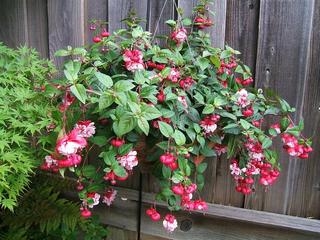 available in bags or liquid and usually contain humic acid and beneficial soil microbes. Most organic forms of nitrogen must decompose before being absorbed by plants and are therefore slow acting, remaining in the soil longer where they are stored until needed by the plant.
available in bags or liquid and usually contain humic acid and beneficial soil microbes. Most organic forms of nitrogen must decompose before being absorbed by plants and are therefore slow acting, remaining in the soil longer where they are stored until needed by the plant.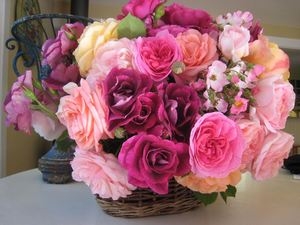 The weather this year has agreed with my roses. It may seem like we’re living in England lately, but the roses have appreciated the cool, moist spring- all the better to set lots of buds without a sudden heat wave to ruin the show. Every rose lover I’ve talked to is raving about the quality, quantity and extended bloom time for their roses.
The weather this year has agreed with my roses. It may seem like we’re living in England lately, but the roses have appreciated the cool, moist spring- all the better to set lots of buds without a sudden heat wave to ruin the show. Every rose lover I’ve talked to is raving about the quality, quantity and extended bloom time for their roses. 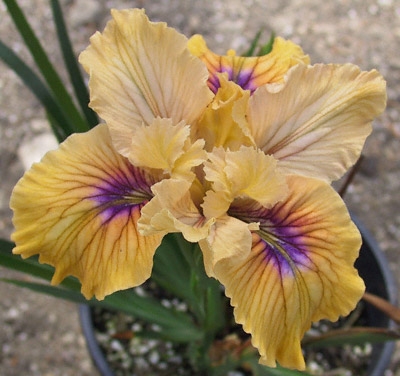 so I want to fine tune my containers and plantings so they attract as many of these small wonders as I can.
so I want to fine tune my containers and plantings so they attract as many of these small wonders as I can.